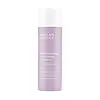What's inside
What's inside
 Key Ingredients
Key Ingredients

 Benefits
Benefits

 Concerns
Concerns

 Ingredients Side-by-side
Ingredients Side-by-side

Water
Skin ConditioningGlycerin
HumectantPropanediol
SolventTriheptanoin
Skin ConditioningC13-15 Alkane
SolventCoco-Caprylate/Caprate
EmollientCarbomer
Emulsion StabilisingFaex Extract
Skin ConditioningApricot Kernel Oil Polyglyceryl-6 Esters
EmollientSoy Amino Acids
Skin ConditioningPunica Granatum Seed Extract
Skin ConditioningCetyl Diglyceryl Tris(Trimethylsiloxy)Silylethyl Dimethicone
Emulsion StabilisingHydrolyzed Yeast Extract
Skin ConditioningOlivine Extract
Skin ConditioningDilinoleic Acid/Butanediol Copolymer
Cellulose
AbsorbentPhenoxyethanol
PreservativeSorbitan Oleate
EmulsifyingSodium Metabisulfite
AntioxidantRetinal
Skin ConditioningGuanosine
Skin ConditioningUracil
Skin ConditioningPolyacrylate Crosspolymer-6
Emulsion StabilisingC9-12 Alkane
SolventCaprylyl Glycol
EmollientPolyglyceryl-10 Dipalmitate
EmollientDipropylene Glycol
HumectantSodium Hydroxide
BufferingGlyceryl Polyacrylate
Tocopherol
AntioxidantPvm/Ma Copolymer
Emulsion StabilisingAdenosine Phosphate
Skin ConditioningCastor Oil/Ipdi Copolymer
Potassium Sorbate
PreservativeHexadecene
SolventSodium Benzoate
MaskingT-Butyl Alcohol
PerfumingWater, Glycerin, Propanediol, Triheptanoin, C13-15 Alkane, Coco-Caprylate/Caprate, Carbomer, Faex Extract, Apricot Kernel Oil Polyglyceryl-6 Esters, Soy Amino Acids, Punica Granatum Seed Extract, Cetyl Diglyceryl Tris(Trimethylsiloxy)Silylethyl Dimethicone, Hydrolyzed Yeast Extract, Olivine Extract, Dilinoleic Acid/Butanediol Copolymer, Cellulose, Phenoxyethanol, Sorbitan Oleate, Sodium Metabisulfite, Retinal, Guanosine, Uracil, Polyacrylate Crosspolymer-6, C9-12 Alkane, Caprylyl Glycol, Polyglyceryl-10 Dipalmitate, Dipropylene Glycol, Sodium Hydroxide, Glyceryl Polyacrylate, Tocopherol, Pvm/Ma Copolymer, Adenosine Phosphate, Castor Oil/Ipdi Copolymer, Potassium Sorbate, Hexadecene, Sodium Benzoate, T-Butyl Alcohol
Water
Skin ConditioningCetearyl Alcohol
EmollientCetearyl Ethylhexanoate
EmollientCyclopentasiloxane
EmollientDimethicone
EmollientGlycerin
HumectantButylene Glycol
HumectantCetyl Palmitate
EmollientButyrospermum Parkii Butter
Skin ConditioningGlyceryl Stearate
EmollientPEG-100 Stearate
Oenothera Biennis Oil
EmollientVitis Vinifera Seed Oil
EmollientCetyl Alcohol
EmollientRetinol
Skin ConditioningTetrahexyldecyl Ascorbate
AntioxidantTocopheryl Acetate
AntioxidantCaprylic/Capric Triglyceride
MaskingPanthenol
Skin ConditioningCarnosine
Skin ConditioningDimethiconol
EmollientDimethicone/Vinyl Dimethicone Crosspolymer
Skin ConditioningBeeswax
Emulsion StabilisingMagnesium Aluminum Silicate
AbsorbentSodium Hydroxide
BufferingXanthan Gum
EmulsifyingDicaprylyl Carbonate
EmollientDecylene Glycol
Skin ConditioningDisodium EDTA
Chlorphenesin
AntimicrobialPhenoxyethanol
PreservativeWater, Cetearyl Alcohol, Cetearyl Ethylhexanoate, Cyclopentasiloxane, Dimethicone, Glycerin, Butylene Glycol, Cetyl Palmitate, Butyrospermum Parkii Butter, Glyceryl Stearate, PEG-100 Stearate, Oenothera Biennis Oil, Vitis Vinifera Seed Oil, Cetyl Alcohol, Retinol, Tetrahexyldecyl Ascorbate, Tocopheryl Acetate, Caprylic/Capric Triglyceride, Panthenol, Carnosine, Dimethiconol, Dimethicone/Vinyl Dimethicone Crosspolymer, Beeswax, Magnesium Aluminum Silicate, Sodium Hydroxide, Xanthan Gum, Dicaprylyl Carbonate, Decylene Glycol, Disodium EDTA, Chlorphenesin, Phenoxyethanol
 Reviews
Reviews

Ingredients Explained
These ingredients are found in both products.
Ingredients higher up in an ingredient list are typically present in a larger amount.
Glycerin is already naturally found in your skin. It helps moisturize and protect your skin.
A study from 2016 found glycerin to be more effective as a humectant than AHAs and hyaluronic acid.
As a humectant, it helps the skin stay hydrated by pulling moisture to your skin. The low molecular weight of glycerin allows it to pull moisture into the deeper layers of your skin.
Hydrated skin improves your skin barrier; Your skin barrier helps protect against irritants and bacteria.
Glycerin has also been found to have antimicrobial and antiviral properties. Due to these properties, glycerin is often used in wound and burn treatments.
In cosmetics, glycerin is usually derived from plants such as soybean or palm. However, it can also be sourced from animals, such as tallow or animal fat.
This ingredient is organic, colorless, odorless, and non-toxic.
Glycerin is the name for this ingredient in American English. British English uses Glycerol/Glycerine.
Learn more about GlycerinPhenoxyethanol is a preservative that has germicide, antimicrobial, and aromatic properties. Studies show that phenoxyethanol can prevent microbial growth. By itself, it has a scent that is similar to that of a rose.
It's often used in formulations along with Caprylyl Glycol to preserve the shelf life of products.
Sodium Hydroxide is also known as lye or caustic soda. It is used to adjust the pH of products; many ingredients require a specific pH to be effective.
In small amounts, sodium hydroxide is considered safe to use. However, large amounts may cause chemical burns due to its high alkaline.
Your skin has a natural pH and acid mantle. This acid mantle helps prevent harmful bacteria from breaking through. The acid mantle also helps keep your skin hydrated.
"Alkaline" refers to a high pH level. A low pH level would be considered acidic.
Learn more about Sodium HydroxideWater. It's the most common cosmetic ingredient of all. You'll usually see it at the top of ingredient lists, meaning that it makes up the largest part of the product.
So why is it so popular? Water most often acts as a solvent - this means that it helps dissolve other ingredients into the formulation.
You'll also recognize water as that liquid we all need to stay alive. If you see this, drink a glass of water. Stay hydrated!
Learn more about Water